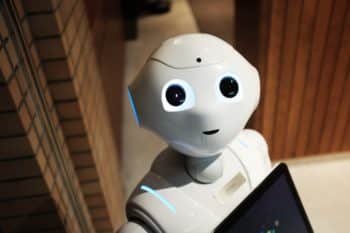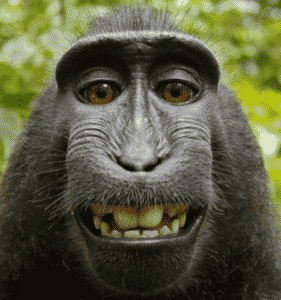Copyright and Artificial Intelligence
Bleep bloop I am not a bot...

Depending on who you talk to, true artificial intelligence can be right around the corner or an impossible pipe dream that humanity will never reach.
However, there is one unavoidable truth. Computers are increasingly doing more and more of the heavy lifting when it comes to creating new content. Just in the consumer market we’ve gone from basic word processors to ones with spell check and now ones that can suggest sentences, correct grammar and make major changes, all without user input.
It’s a similar situation with photography where modern cameras, even the ones in phones, take a lot of the work out of setting up a shot and handle things like focus, light balancing and more. Humans are becoming less and less involved in creating art and computers are taking more and more of the burden from us.
But as that burden is removed and we inch closer and closer to machines being able to create fully independently from us, there is a serious question: Who, if anyone, owns the works they produce?
It’s a question that copyright is both strangely well-equipped and ill-equipped to answer but one that it may need to start thinking about sooner rather than later.
Where We Are Today

Today, this question about AI and copyright is more of a hypothetical. It’s something to be explored by academics and science fiction authors. The reason is that we just don’t have artificial intelligence that’s able to truly create art independent from its human overlords.
The fact that I use predictive text on my phone or the automatic setting on my camera doesn’t mean I’m not the copyright holder in the things I write and the images I take. This is something codified directly into the law itself with 17 U.S. Code § 102 saying that works that qualify for copyright protection do so whether they are made “directly or with the aid of a machine or device.”
Copyright is awarded to works of human creativity that are fixed into a tangible medium of expression. However, the creativity requirement is very low and the work only need to feature a “spark” of creativity to qualify.
As such, any work created by an AI in 2019 would likely be treated as a creative work by the person that directed the AI to make it. If you select a bunch of paintings and tell the AI to make a new one based upon them, the selection of the paintings is, of itself, a creative act, the AI is just a tool to interpret that creativity.
To that end, the AI is little more than a more complicated autocorrect or autofocus in that it’s a tool for interpreting human creativity and aiding in the creation of a new work.
However, this doesn’t mean that there aren’t some interesting questions in 2019. Take, for example, the following scenarios:
- Heliograf: Since at least 2017, the Washington Post has been using Heliograf, an AI reporter, to cover sporting events that they can’t send a human reporter to. While humans are prompting it to write, all they are providing is factual information about the game including box scores and other data. The problem is that facts cannot be protected by copyright, even when compiled at great effort.
- Obvious: Obvious is a group of artists and AI researchers that is using AI named Generative Adversarial Networks (GAN) to generate art. According to the collective, GAN operates without human interference and attempts to create artwork based upon images in its library (its unclear if Obvious chooses the images for GAN). The result is artwork that, while maybe not to everyone’s taste, has sold relatively well with one recent work selling for €10,000 ($12,000).
Do these works qualify for copyright protection? It’s a valid question and much of it likely hinges on details about how the tools are used that aren’t publicly known. Still, these are more philosophical issues than practical ones as market for infringing (or protecting) short blurbs about high school football games or computer-generated art is relatively low.
Still, as humans become less and less involved with the creation of the works they make, there is a daunting question: When does the spark of creativity go from diminished… to extinguished.
The Ghost in the Machine

But let’s say we do manage to create an AI that is sufficiently aware and powerful that it can create works of art with no human intervention or so little intervention that it doesn’t qualify as a creative spark. Now what?
Well, the law is pretty clear. As noted by Andres Guadamuz in WIPO Magazine, most jurisdictions require a human author for copyright protection. This includes the United States, where last year the “monkey selfie” case took the nation by storm and affirmed that animals cannot hold copyright.
The case is surprisingly relevant to the issue. The courts found that the monkey could not hold copyright and that the photographer had not had enough creative input in the image to have a claim of his own. Now simply replace the monkey with and AI and the relationship becomes apparent.
That case was also highlighted by Ryan Long at the Center for Internet and Society and Stanford. There, he highlighted passage in the Ninth Circuit ruling in the case that found the U.S. Copyright Office said it will exclude works “Produced by machine or mere mechanical process that operates randomly or automatically without any creative input or intervention from a human author.”
In short: No human, no copyright protection.
This might seem to be a bit extreme, especially as companies all over the world invest millions of dollars into studying and improving artificial intelligence. If they complete their goals, they could wind up not owning the works their AI produces.
But this makes some degree of sense too. The makers of software (or other tools uses to create) don’t end up with a copyright in works produces with it. Microsoft doesn’t own text written in Word, Adobe doesn’t own images made in Photoshop and so forth. If they did, manufacturers of pens and paint brushes could also enjoy such rights.
That, in turn, is the problem with giving an AI copyright in its output, as Dave Davis of the Copyright Clearance Center put it, there’s no “Ghost in the machine.” No matter how good an AI gets, with current programming methods there’s no way it can have intent of consciousness. It is still a tool and the question is whether there is enough human involvement for the human using it to claim ownership.
To move past that interpretation, we would have to change the law and that would mean a very fundamental shift in what copyright is and what it is meant to protect.
Bottom Line
The next obvious question is “What happens when AI becomes self-aware and truly sentient?” but that’s more a philosophical question than a legal one. It raises questions about what it means to be “alive” and what exactly sentience even is.
If we do reach that point, copyright will be one of the more minor worries. This can be seen in countless science fiction books, TV shows and movies.
As for right now, the answers are relatively clear but we are sliding to a less-clear future. As humans take more of a back seat in creation and the tools we use do more of the work, at what point do we remove ourselves so much from the equation that we can’t own what the tool creates?
It’s a thorny question but one we need to start thinking about now. If we wait too long, it will be easy for the technology to get ahead of the law and that could create a much bigger mess than anyone is prepared for.
Want to Reuse or Republish this Content?
If you want to feature this article in your site, classroom or elsewhere, just let us know! We usually grant permission within 24 hours.
